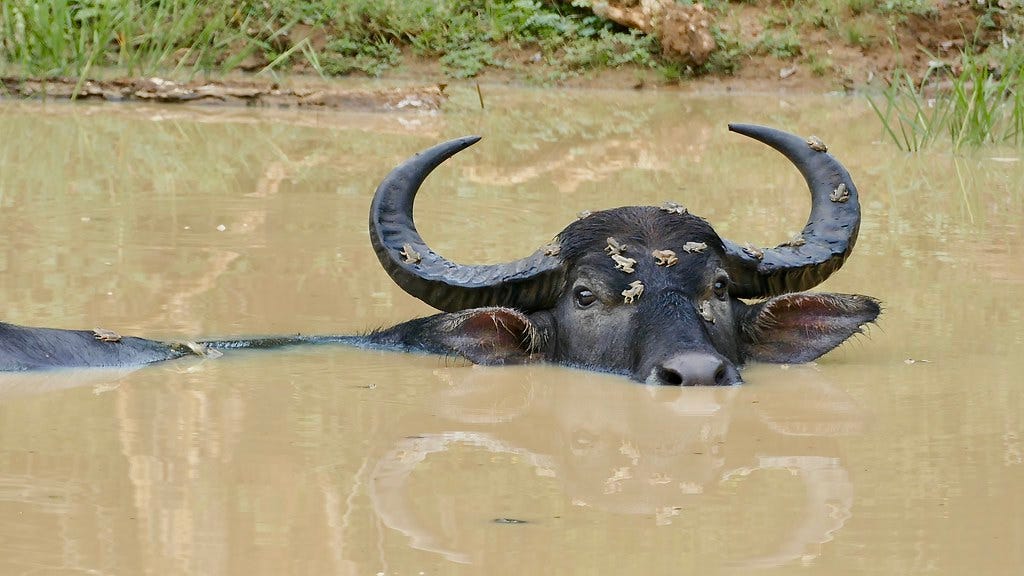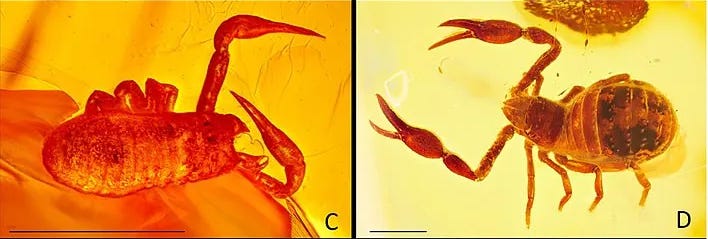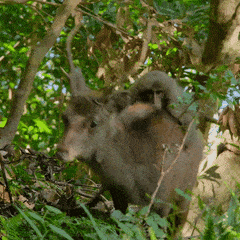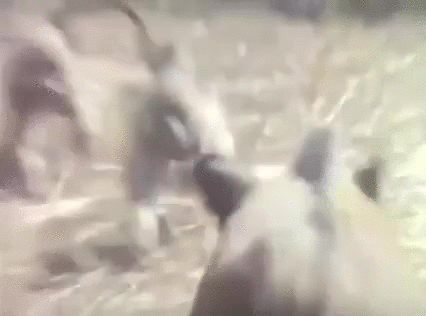Free travel is a good deal if you can get it.
Associations where one animal rides another are phoretic. Phoresis is the name of the interaction. It is a type of commensalism1, distinct from parasitism and mutualism.
The technical labels are picky, and not all riding relationships fit the category.2 If the phoront (rider) cleans the host, e.g. remoras eating scraps and parasites off sharks, it technically is described as mutualism and not phoresis.
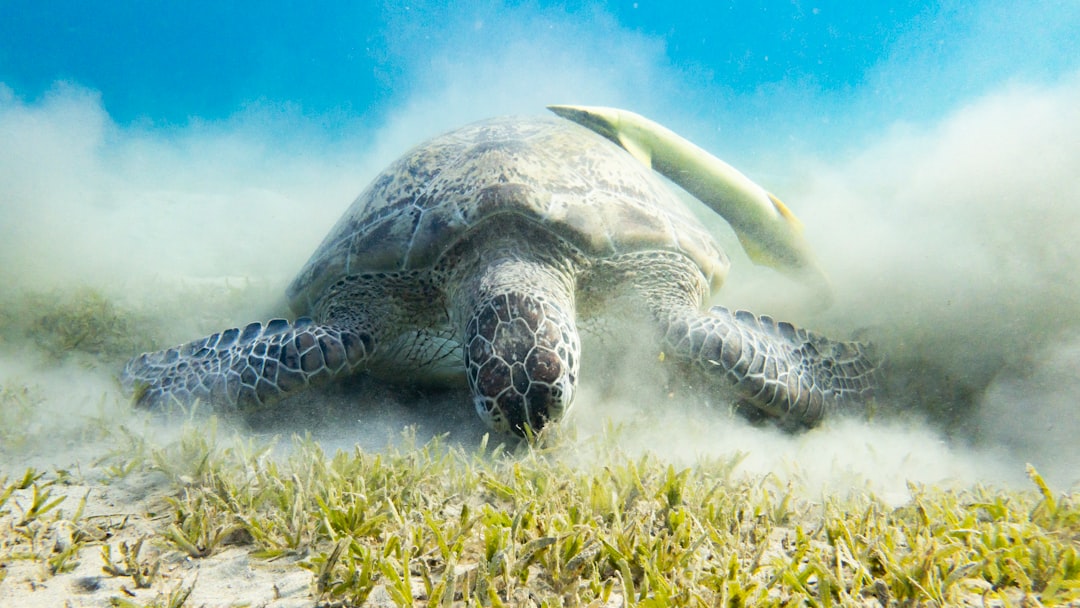
If the attachment is permanent, like barnacles on a whale, or the host suffers as a consequence of the rider, it’s classified as parasitism.3
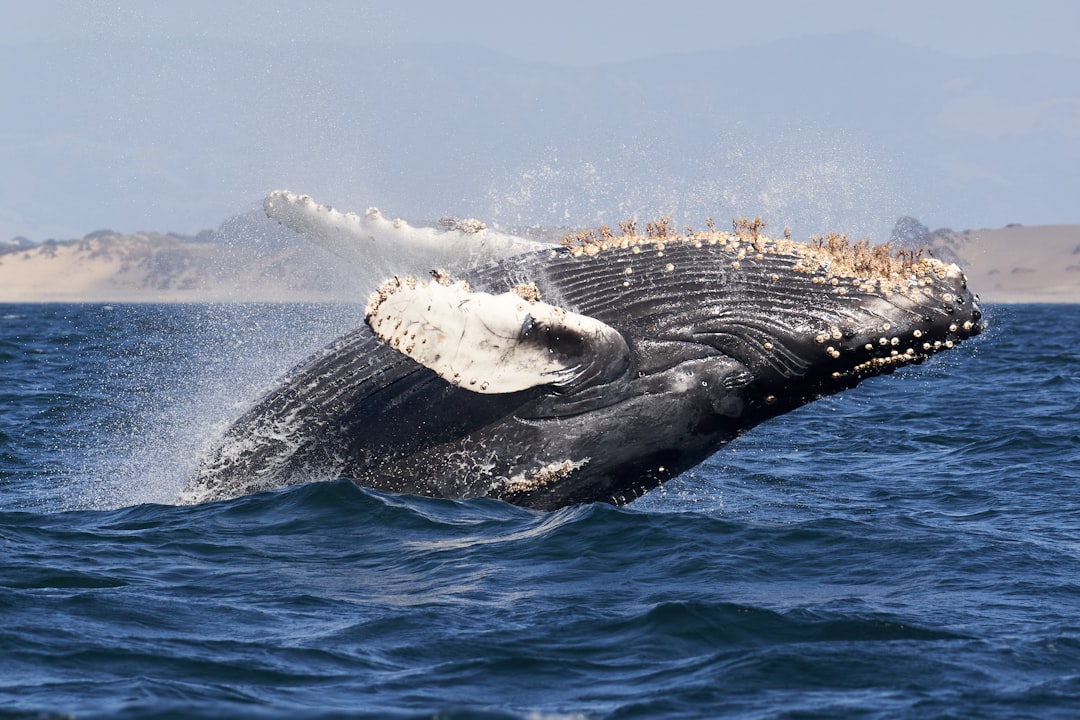
Another category-busting one is the oxpecker. It eats ticks off large mammals. It also has an appetite for blood and will opportunistically wash down ticks with blood from open sores on the host. For a large wound, there might be several oxpeckers competing with each other, digging at the margin, which certainly doesn’t help the healing process.
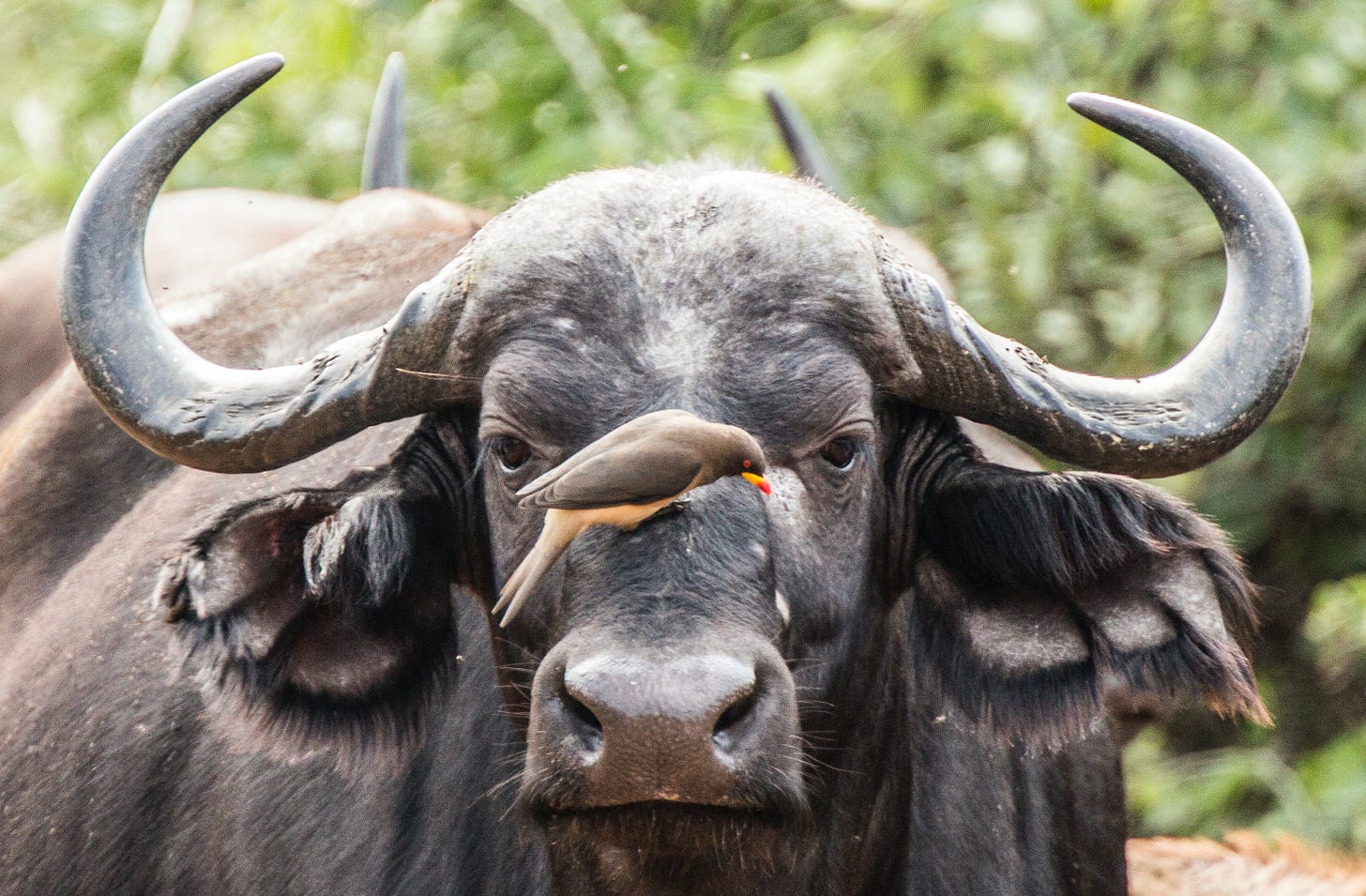
Buffalos are very popular with phoronts.

This genet was captured on a trail camera riding a cape buffalo one night and a rhinoceros another night. In this photo it is peering over the rhino’s back. Is it hiding from bigger cats, looking for mice, or just taking in the smells?
Many examples of phoresis are tiny things like seeds, fungus, and mites. They use the host for dispersal and transportation between ephemeral habitats, like dung piles, carrion, and rotting logs.
The pseudoscorpion has been around for 390 million years. It has grabber claws which cling to other insects. Beetles fly from one nasty buffet to another, and these guys ride along, sometimes mating during the flight. They produce silk thread to tie themselves in.4
Next time you see a spider on your car windshield, consider whether they are there by accident or rare genius. Imagine one making a little seat belt out of silk and reading the street signs.
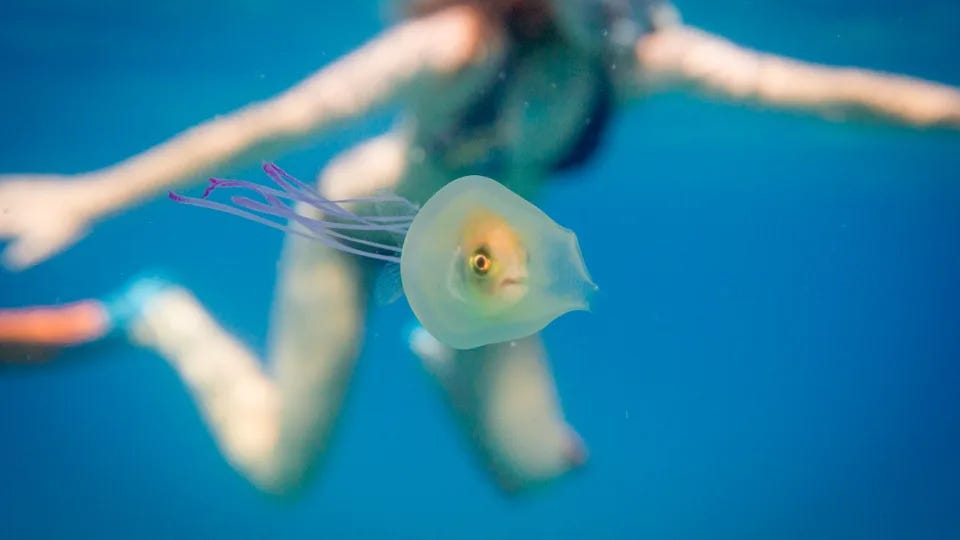
Is this a face of regret or epiphany? Fish will occasionally hide in jellyfish tentacles, but this one ended up inside the jellyfish’s bell. We don’t know whether he got out. He was still in there after the photographer followed him for 20 minutes.
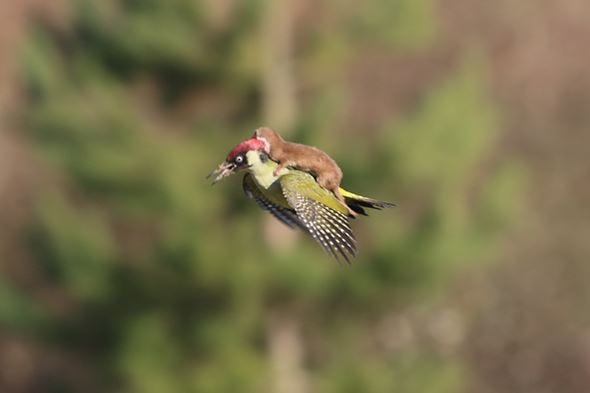
This weasel ambushed a woodpecker and bought himself a meal with a flight option. Riding a bird seems like the coolest way to get around as long as you have the wherewithal to not sink your teeth into its neck.
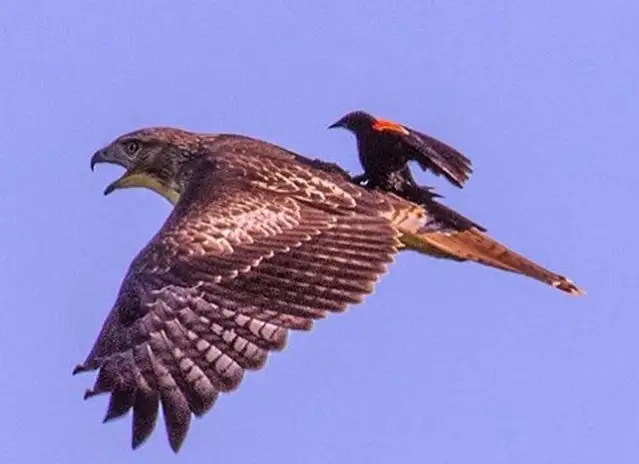

A bird riding another bird is a hardcore flex. Black birds frequently harass raptors to shoo them away from their territory. These well timed photos make you wonder if they could work together to dominate the skies.
Lastly, we have primates riding ungulates. Welcome to the deer-lership.
If you google the caption for the image above, you’ll notice there is another type of interaction between these species where the monkey is positioned slightly further back. I would suggest skipping that though.
Primates cling to their mothers in infancy, and it seems like that would be good training for riding other animals as adults. Given how skittish deer are, it’s remarkable they can be mounted at all.
This association was first described in 2017.5 The authors noted a food connection. Monkeys spill fruit and seeds that deer eat, and they eat parasites off the deer's back.
I couldn’t find a reliable description of what was going on here. But some speculated that the monkeys learned or were trained to slow pigs down for hunting. One step shy of giving them lassos and revolvers.
Ropes, fences, and handfuls of food enabled humans to domesticate horses, donkeys, and camels for long distance travel. Next time you saddle up, remember we’re not the only species with cowboys and -girls.
Commensalism: one is better off, the other is unaffected. Parasitism: one is better off, one is worse off. Mutualism: both are better off. Symbiosis: close, prolonged association.
Parasitology vocabulary https://www.k-state.edu/parasitology/classes/625intro.html
Suffer here means extracting nutritional or developmental penalties.
Macaques and sika deer https://link.springer.com/article/10.1007/s10508-017-1129-8

